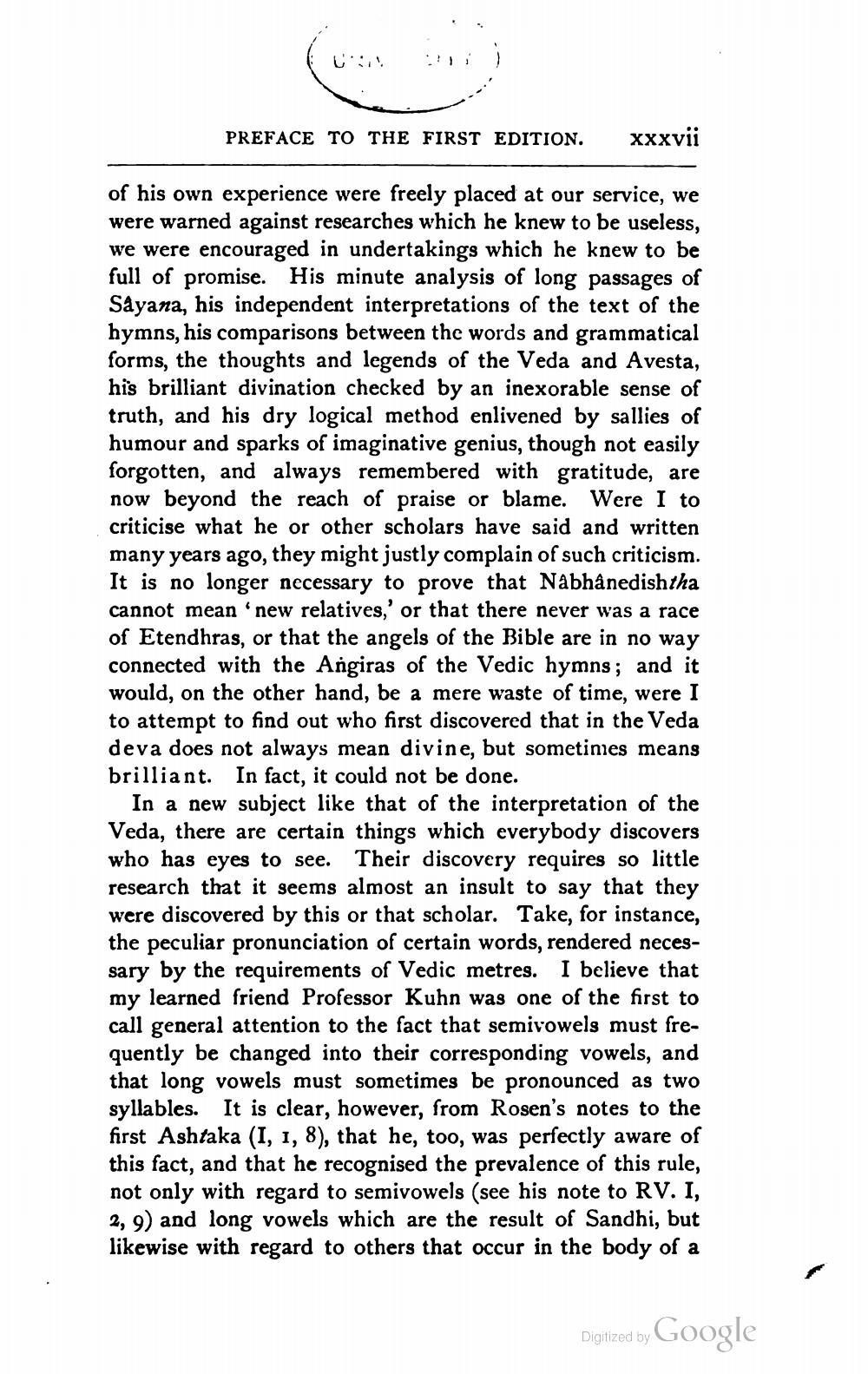________________
PREFACE TO THE FIRST EDITION.
xxxvii
of his own experience were freely placed at our service, we were warned against researches which he knew to be useless, we were encouraged in undertakings which he knew to be full of promise. His minute analysis of long passages of Sayana, his independent interpretations of the text of the hymns, his comparisons between the words and grammatical forms, the thoughts and legends of the Veda and Avesta, his brilliant divination checked by an inexorable sense of truth, and his dry logical method enlivened by sallies of humour and sparks of imaginative genius, though not easily forgotten, and always remembered with gratitude, are now beyond the reach of praise or blame. Were I to criticise what he or other scholars have said and written many years ago, they might justly complain of such criticism. It is no longer necessary to prove that Nabhânedishtha cannot mean 'new relatives,' or that there never was a race of Etendhras, or that the angels of the Bible are in no way connected with the Angiras of the Vedic hymns; and it would, on the other hand, be a mere waste of time, were I to attempt to find out who first discovered that in the Veda deva does not always mean divine, but sometinies means brilliant. In fact, it could not be done.
In a new subject like that of the interpretation of the Veda, there are certain things which everybody discovers who has eyes to see. Their discovery requires so little research that it seems almost an insult to say that they were discovered by this or that scholar. Take, for instance, the peculiar pronunciation of certain words, rendered necessary by the requirements of Vedic metres. I believe that my learned friend Professor Kuhn was one of the first to call general attention to the fact that semivowels must frequently be changed into their corresponding vowels, and that long vowels must sometimes be pronounced as two syllables. It is clear, however, from Rosen's notes to the first Ashtaka (I, 1, 8), that he, too, was perfectly aware of this fact, and that he recognised the prevalence of this rule, not only with regard to semivowels (see his note to RV. I, 2,9) and long vowels which are the result of Sandhi, but likewise with regard to others that occur in the body of a
Digitized by Google




